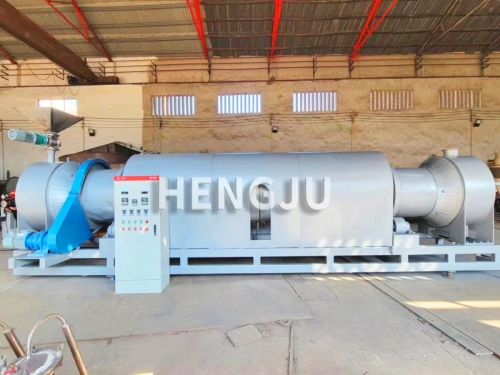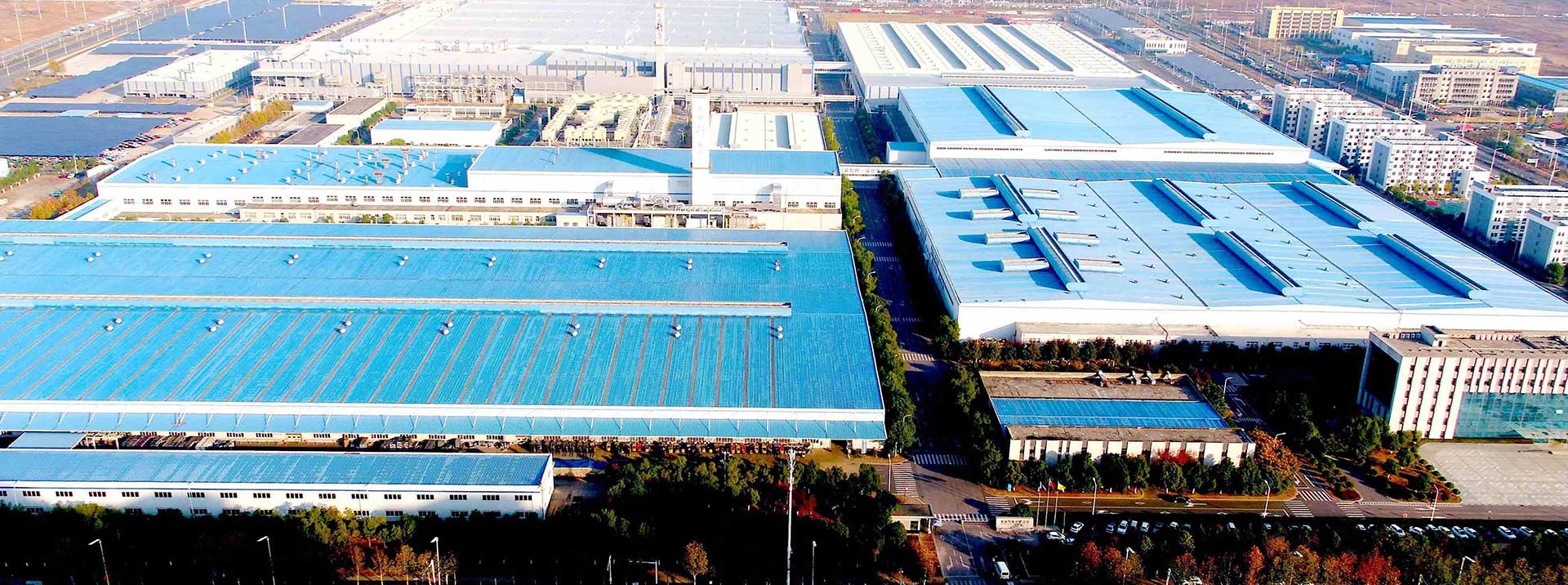How Continuous Charcoal Machines Work: Understanding the Continuous Carbonization Furnace
In today's environmentally conscious and resource-efficient world, the demand for high-quality charcoal is steadily increasing. Traditional charcoal production methods are often time-consuming and can have negative environmental impacts. This is where the Continuous Carbonization Furnace, also known as a Continuous Wood Charcoal Making Machine, offers a modern and efficient solution. This innovative technology allows for the continuous processing of biomass into charcoal, offering significant advantages in terms of production volume, efficiency, and environmental control.
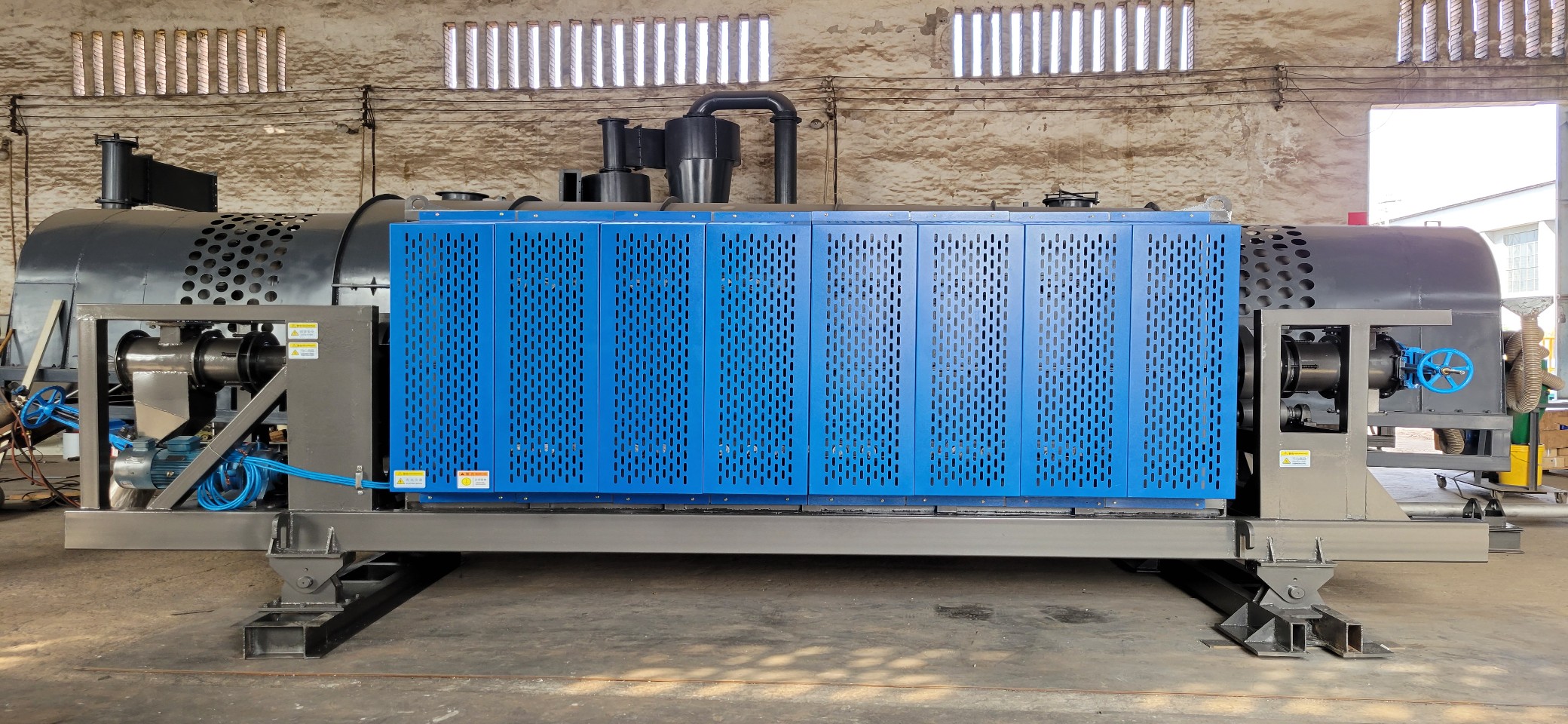
1. Workflow Overview: A Continuous Production Line
The production process within a continuous charcoal machine is designed as a closed-loop automated system. It starts with the consistent input of raw materials and progresses through several key stages: drying, carbonization, gas recovery, and finally, cooling and discharging the finished charcoal.
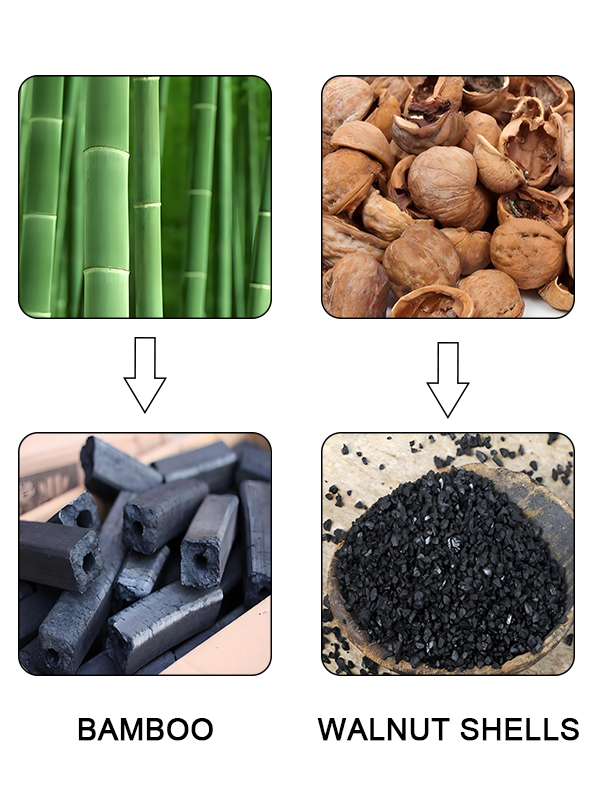

2. Raw Material Feeding:
The process begins with the continuous feeding of biomass raw materials into the equipment. This can include a variety of materials such as wood chips, coconut shells, sawdust, and other forms of agricultural waste. The input is typically managed via a conveyor belt or a screw feeder system.
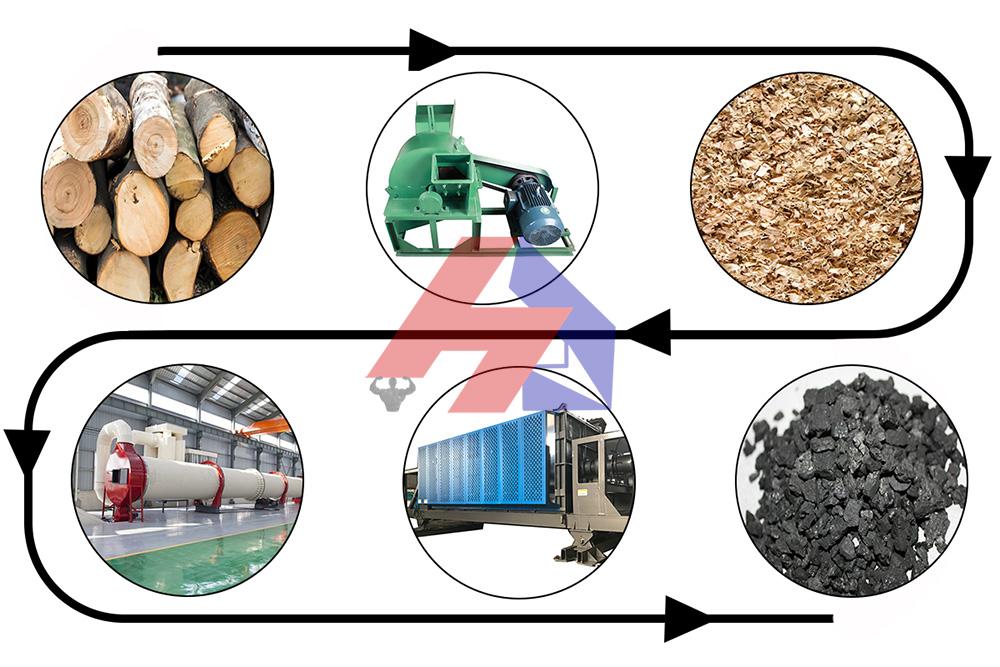
The process begins with the continuous feeding of biomass raw materials into the equipment. This can include a variety of materials such as wood chips, coconut shells, sawdust, and other forms of agricultural waste. The input is typically managed via a conveyor belt or a screw feeder system.
The feeding system plays a crucial role in maintaining a stable material supply, with the rate being precisely controlled according to the processing capacity of the carbonization furnace. This ensures consistent and efficient operation.
3. Pre-treatment: Drying for Efficiency:
Before the raw materials enter the core carbonization stage, they undergo pre-treatment in a dryer. This dryer cleverly utilizes the waste heat generated by the combustion chamber as an energy-saving mechanism to reduce the moisture content of the biomass to an optimal range of 10-15%. Lower moisture content significantly enhances the efficiency and quality of the subsequent carbonization process.
4. Carbonization: The Pyrolysis Reaction:
The dried raw materials then move into the carbonization reaction zone. Here, they are subjected to a high-temperature environment, typically ranging from 400°C to 600°C (around 750°F to 1100°F), within an oxygen-free or oxygen-deficient atmosphere. This high-temperature treatment in the absence of sufficient oxygen triggers a process called pyrolysis. During pyrolysis, the biomass thermally decomposes, transforming into carbon-rich charcoal, while also releasing combustible gases and bio-oil.
5. Gas Recovery and Reuse: Enhancing Sustainability:
A significant feature of continuous charcoal machines is their integrated gas recovery system. The combustible gases generated during the carbonization process are captured and channeled for beneficial reuse. A portion of these recovered gases is directed back into the combustion chamber to serve as a fuel source, providing the energy needed for both the carbonization and drying stages. This self-sustaining energy cycle dramatically reduces fuel consumption and minimizes operational costs.
Excess gas undergoes further processing through purification equipment such as scrubbers and condensers. This step is crucial for removing harmful substances before any remaining gas is released, ensuring compliance with environmental regulations and minimizing the machine's carbon footprint. This efficient gas recovery mechanism highlights the environmental advantages of continuous charcoal production.
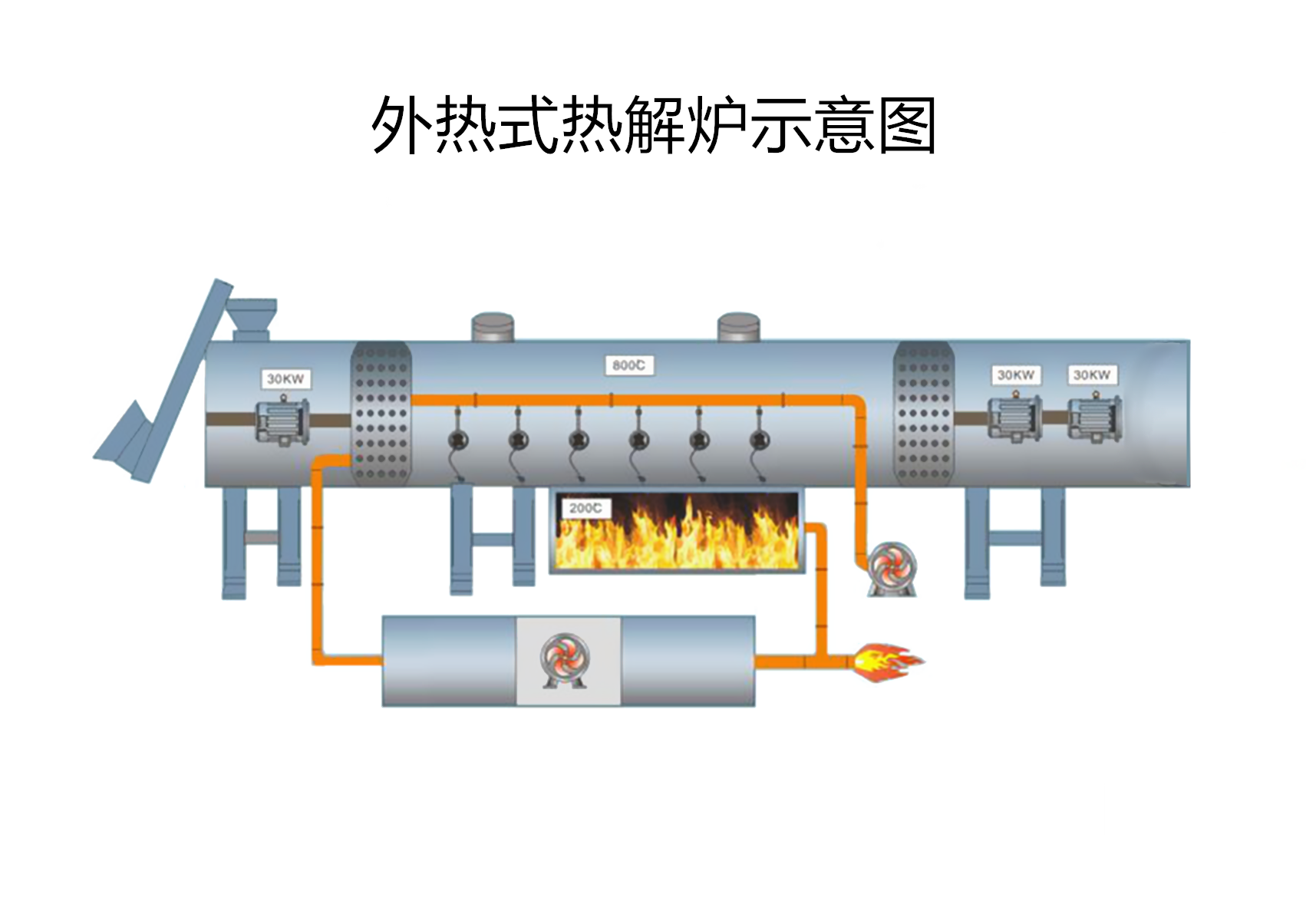
6. Cooling and Discharging: Automated Output:
Once the carbonization is complete, the resulting charcoal is automatically transported to a cooling device via the discharging system. The charcoal is typically cooled to a safe handling temperature using either water or air cooling methods. This cooled charcoal can then be directly packaged for sale or undergo further processing depending on the intended application.
The continuous charcoal machine's automated cooling and discharging design ensures that the entire production process can run without interruptions or shutdowns, guaranteeing a stable and consistent output of high-quality charcoal.
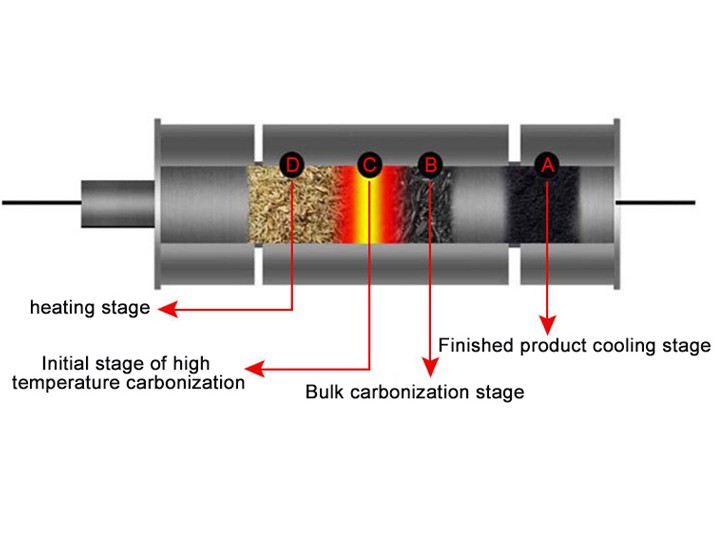
Key Advantages of Continuous Charcoal Machines:
Implementing continuous charcoal machines offers numerous benefits for biomass processing enterprises:
High Production Capacity: Enables a continuous and high volume of charcoal output.
Enhanced Efficiency: Optimizes the conversion of biomass to charcoal, reducing waste.
Energy Savings: The recovery and reuse of combustible gases minimize the need for external fuel.
Environmental Responsibility: Reduces carbon emissions through gas purification and utilization.
Cost-Effective Operation: Lower energy consumption and reduced labor requirements contribute to significant cost savings.
High-Quality Charcoal: The controlled carbonization process results in a uniform and high-quality end product.
Automated Process: Minimizes the need for manual intervention, reducing labor costs and improving safety.
Comparison Table: Continuous Carbonization Furnace vs. Traditional Charcoal Production
| Feature | Continuous Carbonization Furnace | Traditional Charcoal Production (e.g., Pit Burning, Kilns) |
|---|---|---|
| Production Capacity | High, continuous operation | Low, batch-based |
| Efficiency | High, controlled process | Low, often inefficient combustion |
| Charcoal Quality | Consistent and controllable | Variable, often inconsistent |
| Environmental Impact | Lower, with gas treatment | Higher, significant smoke and emissions |
| Energy Efficiency | High, with gas recovery | Low, significant energy loss |
| Labor Requirements | Lower, automated systems | Higher, manual labor intensive |
| Control | Precise temperature and process control | Limited control over temperature and process |
| Space Requirements | Moderate to high | Can vary, pit burning may require less fixed space but more land use over time |
| Initial Cost | Higher initial investment | Lower initial investment |
Hengju Machinery: Leading the Way in Continuous Carbonization Technology
Hengju Machinery is a reputable manufacturer specializing in advanced biomass processing equipment, including high-quality continuous charcoal machines. Their continuous charcoal machines are engineered to provide continuous and stable charcoal production, often exhibiting superior quality and a longer service life compared to other options on the market. Hengju Machinery's commitment to innovation and quality makes them a trusted partner for businesses seeking efficient and environmentally friendly charcoal production solutions. For any inquiries or further information about continuous charcoal machines, please don't hesitate to contact Hengju Machinery, where their team of professional engineers will be happy to assist you.
The continuous charcoal machine represents a significant step forward in charcoal production technology. Its ability to provide continuous, stable, and efficient charcoal production, coupled with its environmental benefits through energy recovery and emission reduction, makes it an ideal choice for biomass processing enterprises seeking large-scale production. The automated nature of these machines not only ensures consistent quality but also contributes to lower operational costs. Companies like Hengju Machinery are at the forefront of this technology, providing reliable and advanced solutions to meet the growing global demand for charcoal.
Copyright: Copyright belongs to Hengju Machinery! Reprint please indicate the source: https://www.hengjumachinery.com/industry-news/how-continuous-charcoal-machines-work-understanding-the-continuous-carbonization-furnace.html

